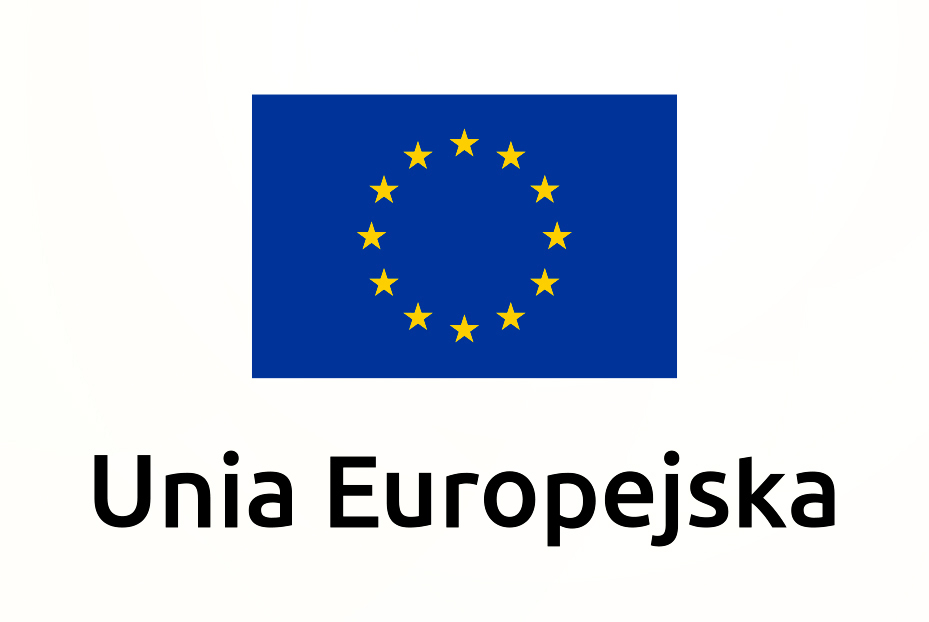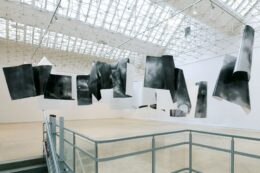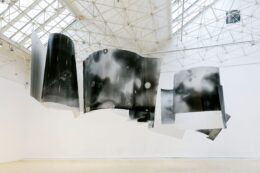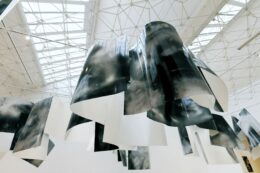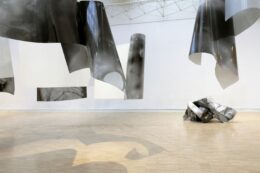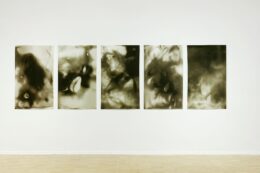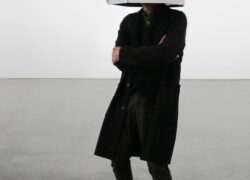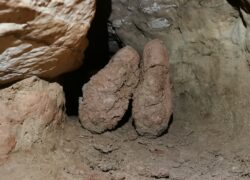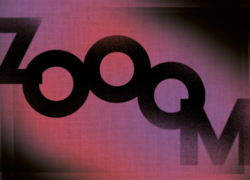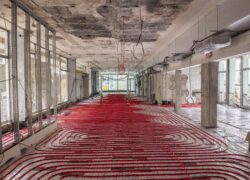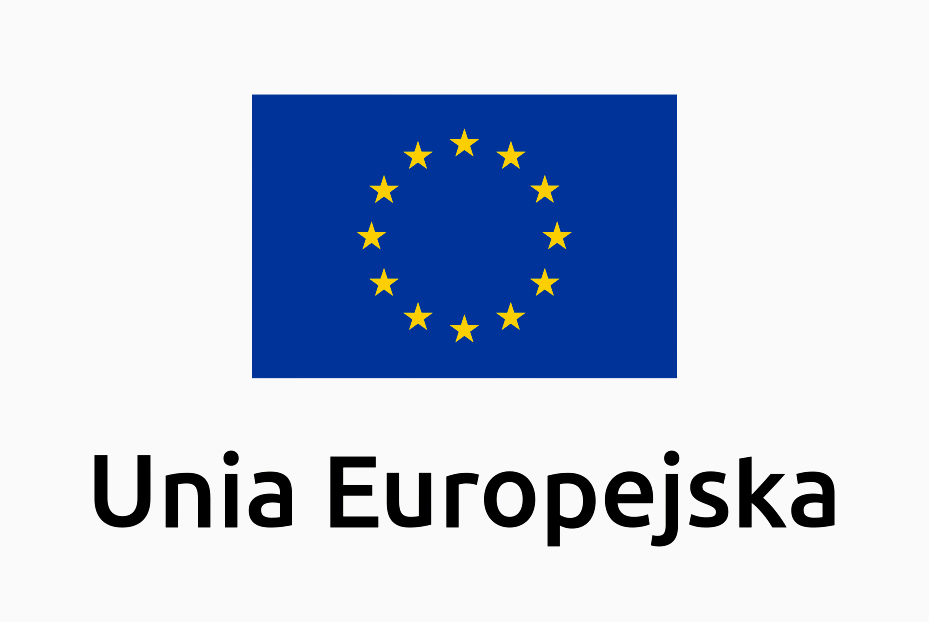The exhibition of photographer Michael Wittassek is a site-specific project planned for a number of years. The German artist, who creates spatial objects/sculptures from exposed photographic paper, participated in the group exhibition Order and Chaos. An exhibition of a fragment of the Kunstmuseum Villa Zanders Collection at the Arsenał Municipal Gallery in 2018. At that time, he took advantage of the potential of the Gallery’s unusual ceiling, or rather a suspended metal structure, which is perfect for hanging objects. Now, just before the overhaul of the Gallery’s premises, we present a show of Michael Wittassek’s works, planned as long as 3 years ago, within a space which will soon change its shape forever.
Before the show Michael Wittassek was interviewed by Bogna Błażewicz
B.B.: Light phenomena and light itself are among the most important categories for photographers. Tell us, please, about the light in your art, as well as your being inspired by the aurora borealis.
M.W.: Light in combination with light-sensitive material is the backbone of any photography. Thus, the word photography (drawing with light) also refers to this context, and less to what we usually call photography, i.e. the photographic image understood as capturing a fleeting moment. In my work I deal with the elements that make up photography, namely light, photographic paper, photographic chemistry, developer, and fixer. I see the photographic image less as a representation of a recognisable object and more as an image that makes processes visible. This is also the case with the photographs I took for the Aurora exhibition. Obviously, these are not photographs of the northern lights taken somewhere in the northern climes, but they represent a “microcosm” that is created on a sheet of photographic paper touched by light: the developer blackens these areas, which is disturbed by the fixer, and allows associations that bring to mind the nocturnal firmament, where luminous halos or streaks of light appear. In the next step, the small photographs are re-photographed and enlarged (to approx. 112 x 200 cm).
B.B.: I know that when you visited the Gallery a few years ago, you really liked the space of the room upstairs and from the beginning, when I invited you to a solo exhibition, you wanted to use this special construction under the ceiling.
M.W.: Right, I love this building. It is a testament to the Polish modernism of the 1960s. The architectural form, which I do not find in Germany or France, for example, and the large exhibition space with its shed roof and this suspended structure encompassing the hall! It was enthralled already on my first visit to the Gallery, in the late 1990s. The idea of the photographic installation that I have now developed for this space is based on the situation where the visitors come from below into the upper room, their gaze turned upwards. They seem to be immersed in the night sky. This is due to the multitude of photographs, suspended ribbon-like at different heights to resemble waves. The suspended structure is ideal for this. On the one hand, it allows the use of multiple suspension points, and on the other, it does not close off the space or limit it, but rather reveals what is behind…
B.B.: You are a photographer as well as a sculptor who makes use of photographs.
M.W.: For me, photography is a material. It is not only a vehicle for an illusionistic image, but is itself a “body-picture”, literally, with which, with my own body, I come face to face. For me, the defining element of my work is contained in the relationship between the photographic object / photo-sculpture and the viewer. In this context, I explore the various material qualities of photography, but also the cultural and historical background that determines them. How do we look at photography? What does photography say about our idea of reality? The result is always inspired by the longing for a photography that transcends itself and yet is still photography in its essence, revealing other, still hidden possibilities. There is no front and back in my installations; the reverse side of photography is also photography. My installations convey the vulnerability of a material that can be crumpled and torn, but which I can also shape and which has clear sculptural properties! A few photographs are the necessary “individual parts”, the work only becomes complete with the completed installation in the space provided for it. Decisive for me (and for the viewer) is the concrete experience that arises when I walk around the object, experience and understand it. This always involves a risk. I can anticipate the final result, through sketches etc., but the possibility of failure is still there.
curator: Bogna Błażewicz
